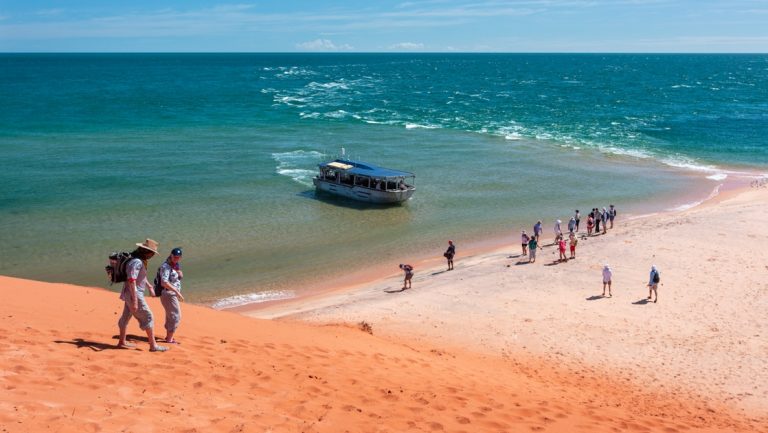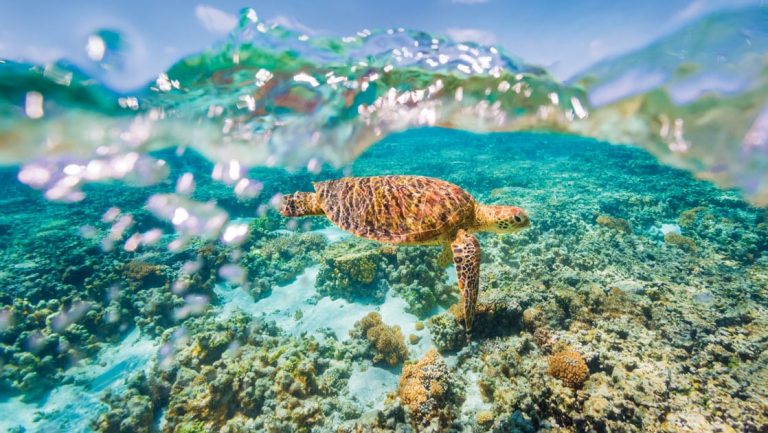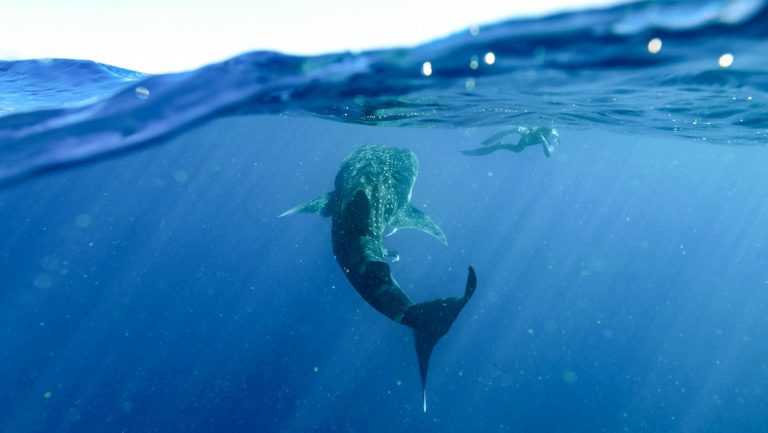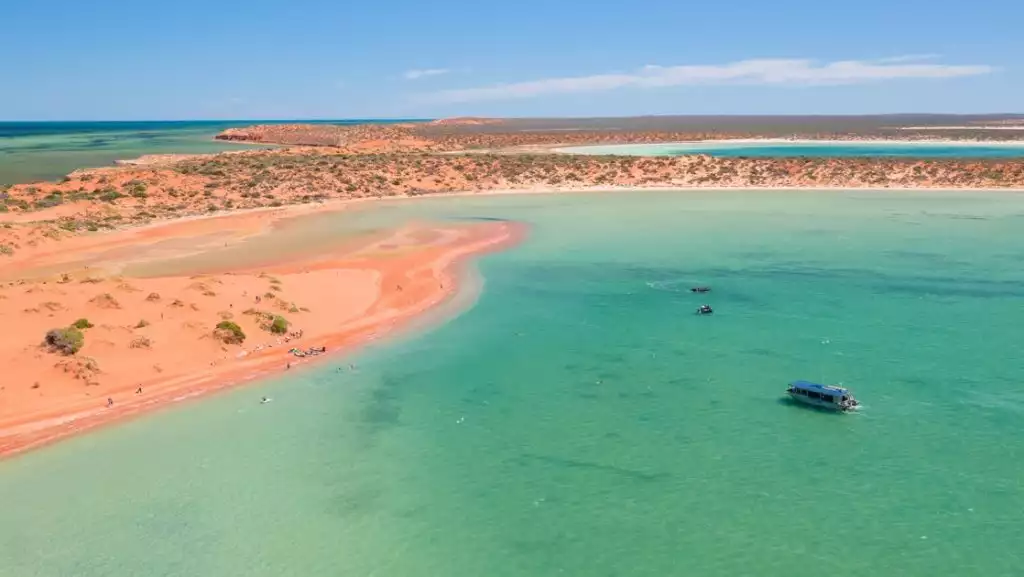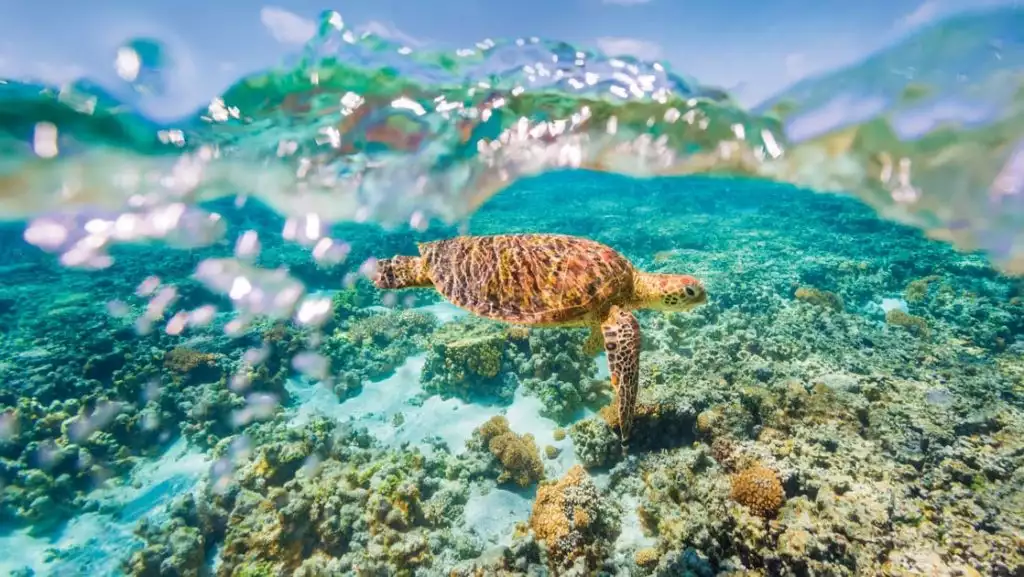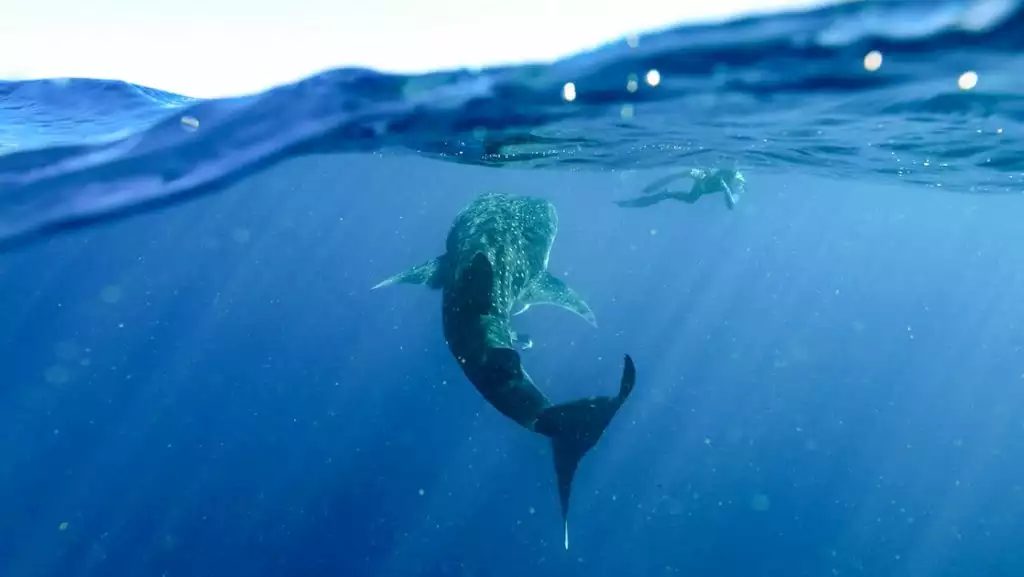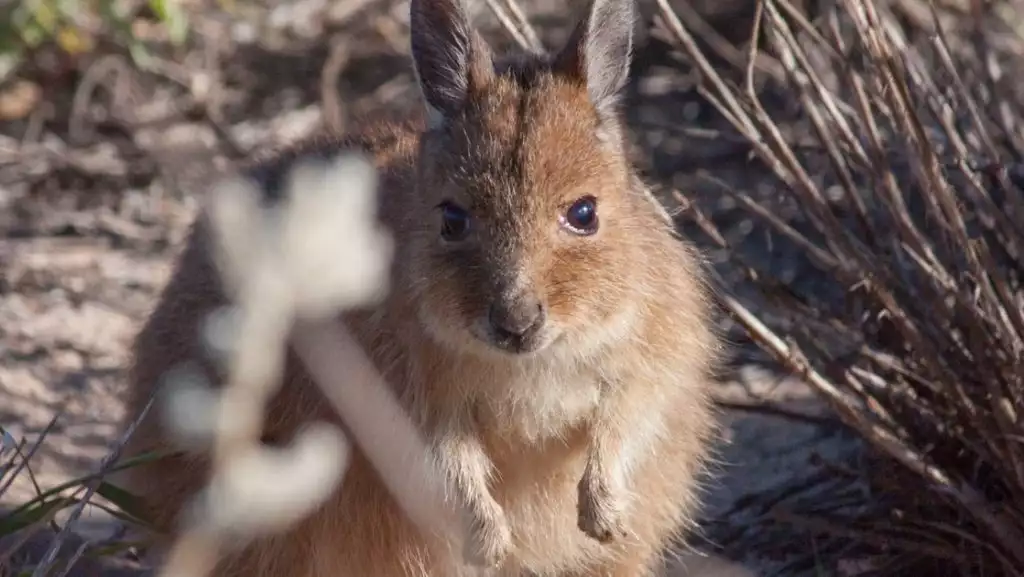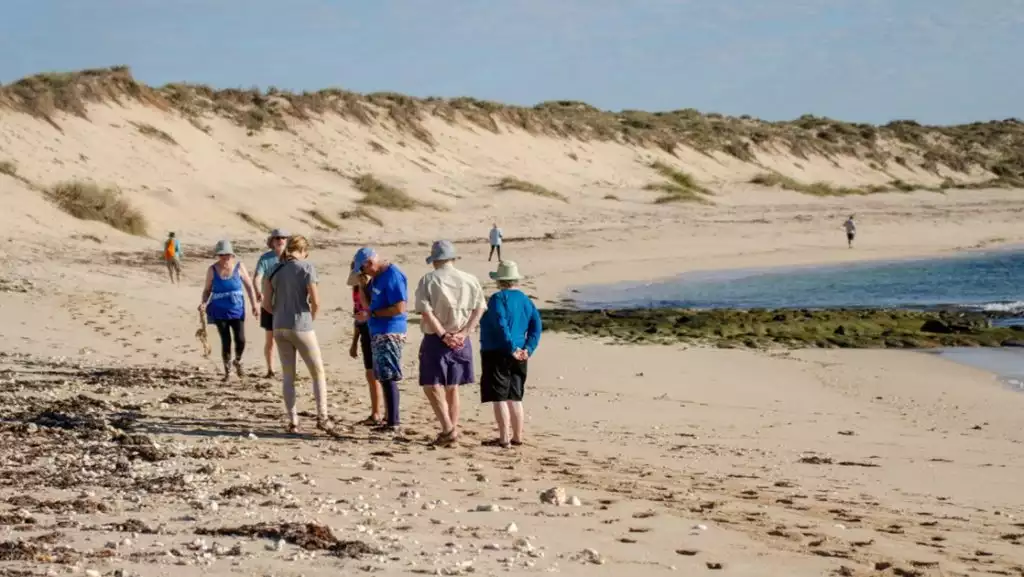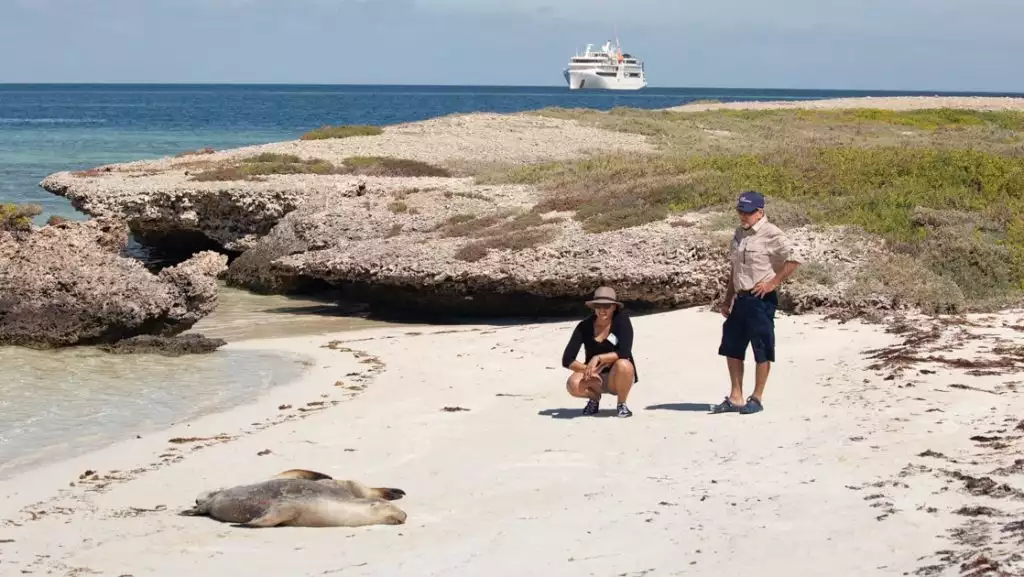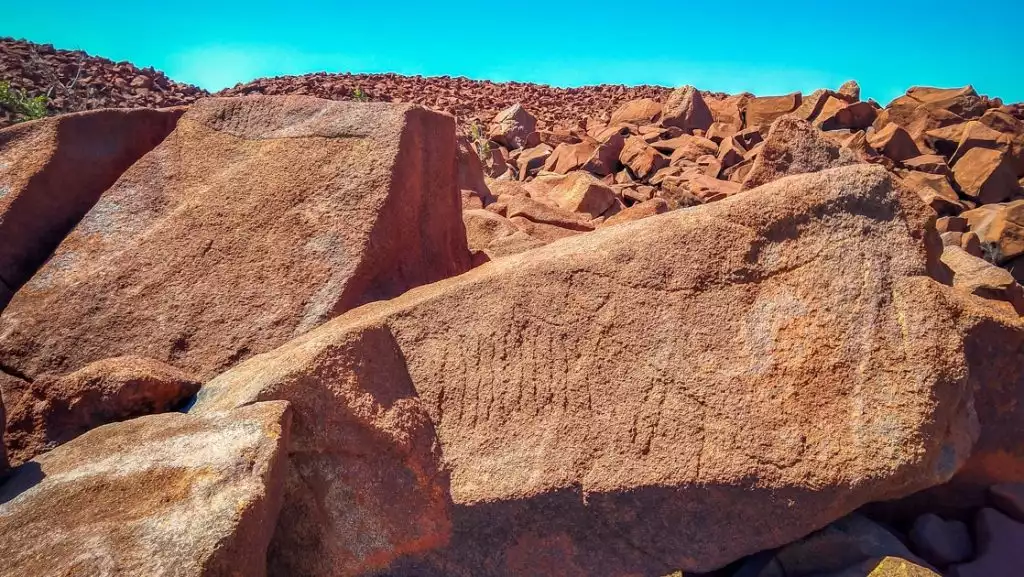No two western Australia cruises are the same. Throughout the expedition, allowances may be made for seasonal variations, weather, tidal conditions and any other event that may affect the operation of the vessel. Below is a selection of the key destinations visited.
The Abrolhos Islands
The Abrolhos Islands consist of 122 islands, clustered into three main groups: the Wallabi, Easter and Pelsaert Groups. Lying in the stream of the southward flowing Leeuwin current, the marine environment here is a meeting place for tropical and temperate sea life. Common marine mammals include Australian sea lions and bottlenose dolphins, and over 90 species of seabirds have been identified. The treacherous reefs around these islands have claimed many wrecks over the centuries, the most famous being the Batavia in 1629—whose Dutch crew swam ashore only to experience a brutal mutiny. The Abrolhos islands offer a near-pristine natural environment with a diverse range of marine and terrestrial fauna and flora. This area also offers a rich history including shipwrecks and remnants of early colonial industries such as guano mining and commercial fishing. The Australian sea lions love to swim and play with snorkelers and divers here.
Pelsaert (Southern) Group
At the Pelsaert (Southern) group, visit Liddon Pearl Farm and Crayfishing operations on Post Office Island. Learn what is involved with growing the pearls, learning the different shells and pearl categories, and how the different types of pearls are set. Also have insights into the renowned cray fishing industry of the island, from the family who has been in the Abrolhos for four generations. Later is the opportunity to snorkel the blue holes from the jetty.
Easter Group
At the Easter Group, visit the Sea Lion colony at Little Sandy Island, home to the largest colony of Sea Lions in the Abrolhos. Later, snorkel the vibrant coral reefs at locations such as Squid Hole, the Anemone Lump or Morley Island. Also enjoy the opportunity to bird watch at Wooded Island. Activities will be subject to weather and tides as this area is known to be very tidal and windy.
Wallabi Group
Today snorkel off picturesque Turtle Bay and take a short walk along the beach where Tamar wallabies, skinks and the endemic Abrolhos dwarf bearded dragons may be seen. Cruise past the Pidgeon islands, the wealthiest of the crayfishing islands. Birdwatch for ospreys, white-bellied sea eagles and Caspian terns amongst other birdlife. Conditions permitting, visit Beacon Island, also known as the Island of Angry Ghosts, where 126 men, women and children were massacred by the blood thirsty mutineers of this area over 400 years ago. This is home to fantastic bird life, as well as the Batavia Memorial cairn and the coral pits—still evident from where Jeronimus Cornelisz (the mutiny ring leader) was held prior to his trial and execution.
Shark Bay World Heritage Area
Explore the Shark Bay World Heritage Area, the first location in Western Australia to receive UNESCO World Heritage status, in 1991. This is a region of colorful landscapes, rare flora and fauna, and home to a staggering 35% of all of Australia’s bird species. Explore Francois Peron National Park, named after the naturalist on explorer Nicholas Baudin’s expeditions. Cruise past historic Cape Inscription, the site of Dirk Hartog’s landing in 1616, and time permitting, enjoy a refreshing swim off the sandy remote beach.
Cruising The Ningaloo Coast
The remote and well-hidden Bateman’s Bay, just north of Coral Bay, is a much more remote and untouched landscape in comparison with beautiful sand beaches. Weather permitting, make a short landing on the remote Ningaloo coast between Northwest Cape and Shark Bay, for a swim and a beachcomb.
Exmouth & Cape Range National Park (Ningaloo Reef)
One of the longest and most pristine fringing reefs in the world, Ningaloo Reef has an unusually narrow continental shelf. The deep oceanic waters, reef and coastline communities are close in proximity, resulting in a huge array of significant and healthy marine life coexisting in one area. The Ningaloo Coast is also one of the most important turtle nesting rookeries in the Indian Ocean, with a significant maritime history from explorers, traders, pearl luggers, whaling and fishing. Spend the day at Cape Range National Park with options to snorkel at Turquoise Bay, visit Yardie Creek via a 0.75-mile nature walk, head up to the Vlamingh Head Lighthouse or visit the Ningaloo Center. There will also be some free time to explore Exmouth.
Muiron Islands & Serrurier Island
The Muiron Islands are located approximately 10 nautical miles off the North West Cape. The Islands are well known for their incredible reef, colorful soft corals, an abundance of turtles, schools of fish and even sightings of manta rays! A variety of dive sites are on offer at this destination, including swim-throughs and ledges where nudibranchs, eels and angelfish hide. With fantastic bommies and protected reef, snorkelers will appreciate the variety of soft corals and gorgonians as well the incredible fish life. Birdlife is abundant onshore—see if you can spot wedge-tail shearwaters, roseate terns, osprey and black-shouldered kites (just to name a few).
Serrurier Island is located a further 20 nautical miles northeast of the Muirons. Here, experience great coral competition and seagrass beds that feed the local dugongs. The World Heritage-listed Ningaloo Reef is the turquoise jewel in the crown of the Western Australian coastline. Spanning nearly 2,000 square miles, this is one of the largest fringing reefs in the world. Its inner and outer reefs create a diverse range of habitats for vibrant corals and more than 500 species of fish. This is also where mega marine life come to feed during their migrations, including humpback whales, giant manta rays and the majestic whale shark. It is also a coastline with a fascinating heritage, where lonely whalers battled it out against the elements. After in-water activities, stretch the legs on a stroll down the beach on these untouched islands.
Montebello Islands
The Montebello Islands, or Montes, are an archipelago of more than 250 limestone islands and islets off the coast of the Pilbara. A delight for birdwatchers, the islands are considered an Important Bird Area, as they support over 1% of the world populations of fairy and roseate terns, as well as sooty oystercatchers. The Montes have an explosive past. Alpha and Trimouille Islands were the site of three British atomic weapons tests in the 1950s. Relics of the military operation can still be found on the islands today. Visit the plinth, which marks Ground Zero at Trimouille Island, now a haven for wildlife, including the rufous hare wallaby. A fascinating maritime history surrounds the Montebello Island. Survivors of the Dutch vessel “Tryall” swam here after their ship was wrecked in 1622, therefore being the first Europeans to land on the islands. Spend a full day exploring this island group, including wildlife spotting opportunities and beautiful beach walks. Keep watch for the rare rufous hare wallaby and lagoon rays while exploring amazing vistas.
Dampier Archipelago
Consisting of 42 islands and islets, 25 of which are nature reserves, the iron-red islands of the Dampier Archipelago stand in bright contrast to the turquoise waters which surround them. The archipelago not only offers exceptional natural beauty but significant sites for Aboriginal and European Heritage, many of which are in National Heritage Listed Areas. Named after English explorer William Dampier who first visited the islands aboard the Cygnet in 1699; the islands’ earliest inhabitants were the Yaburara people, as is evidenced by the thousands of rock engravings, shell middens and stone arrangements scattered across the area. There will be ample opportunity to explore the area’s historical and cultural sites before taking to the azure waters for swimming and kayaking. Birdwatchers will have the opportunity to see several species of migratory waders as well as sea eagles and ospreys. With luck, possibly even see the elusive Rothschild’s rock wallaby. **Please note viewing of aboriginal petroglyphs is subject to approval and guidance by traditional owners of the area, and cannot be guaranteed**

